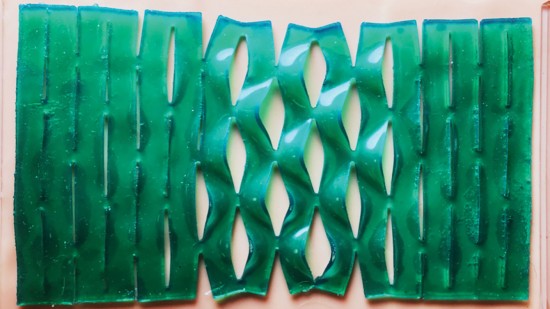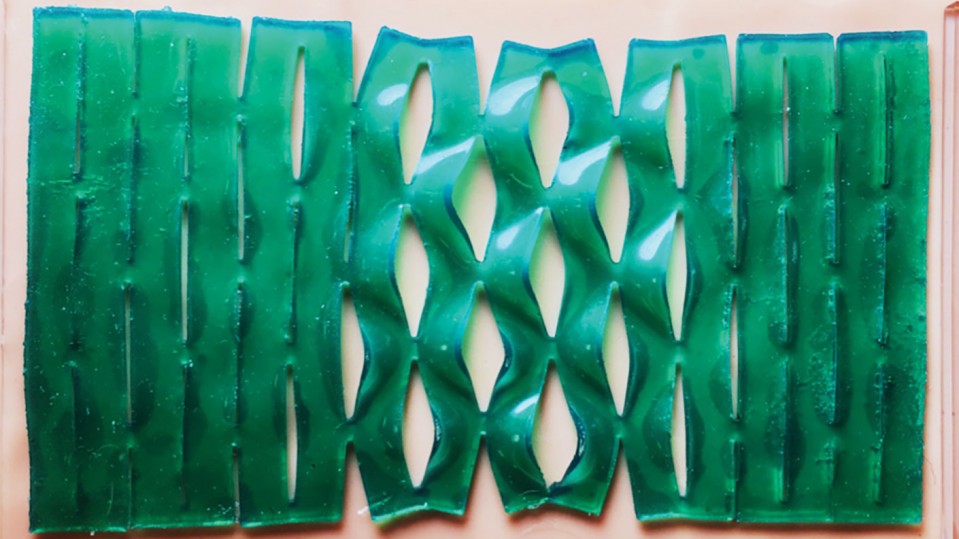The kindest cut
Origami variation with slits inspires bandages that adhere to flexible surfaces.



It’s tricky to bandage scraped knees and elbows. Often, the bandages peel off after just a few bends of the limb.
Now MIT engineers have come up with a stickier solution, in the form of a thin, lightweight, rubber-like film. The adhesive film can maintain its hold even after 100 bending cycles. The key to its clinginess is a pattern of slits cut into the film, similar to the cuts that make elaborate three-dimensional structures possible in a paper-folding art form known as kirigami.
The researchers attached the “kirigami film” to a volunteer’s knee and found that with each bend, its slits opened at the center, in the area with the most pronounced bending, while the slits at the edges remained closed, allowing the film to remain bonded to the skin. The design also gives the film better grip: the cuts that open release tension that would otherwise cause the entire film to peel away.
The technology had its genesis in August 2016, when a medical supply company in China asked Ruike Zhao, a mechanical engineering postdoc, and her colleagues to develop a version of its popular pain-relieving bandage that wouldn’t detach when applied to elbows and knees.
The researchers fabricated thin films by pouring a liquid elastomer, or rubber solution, into 3-D-printed molds with rows of offset grooves. Once cured and removed from the molds, the elastomer layers were studded with rows of offset slits. The researchers say the film can be made from a wide range of materials, from soft polymers to hard metal sheets.
Zhao applied a thin--- adhesive coating to both the kirigami film and an elastomer film without slits before attaching them to a volunteer’s knees. The plain, continuous film detached after one knee bend, whereas the kirigami film maintained its hold even after 100 bends.
Zhao and her colleagues have filed a patent on their technique.